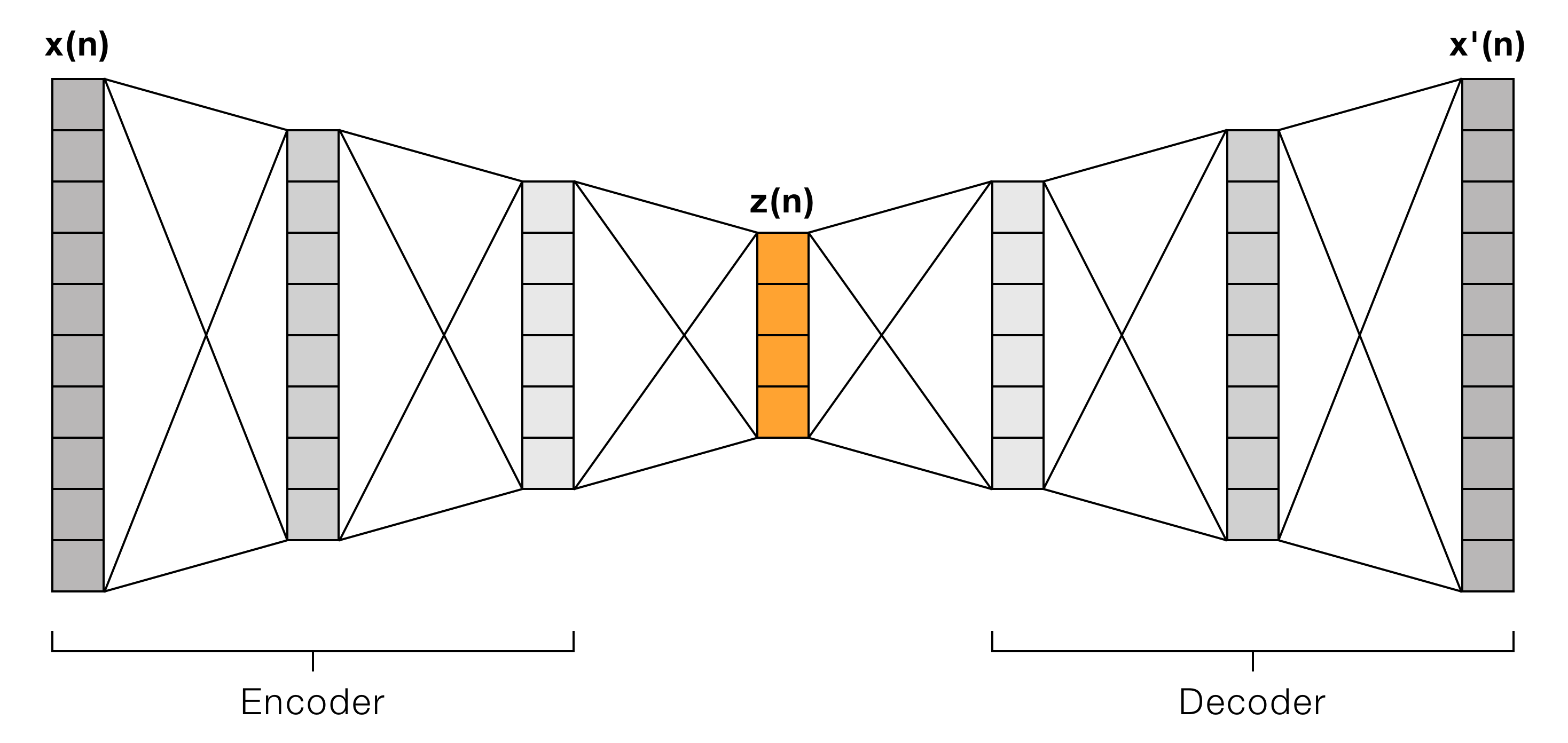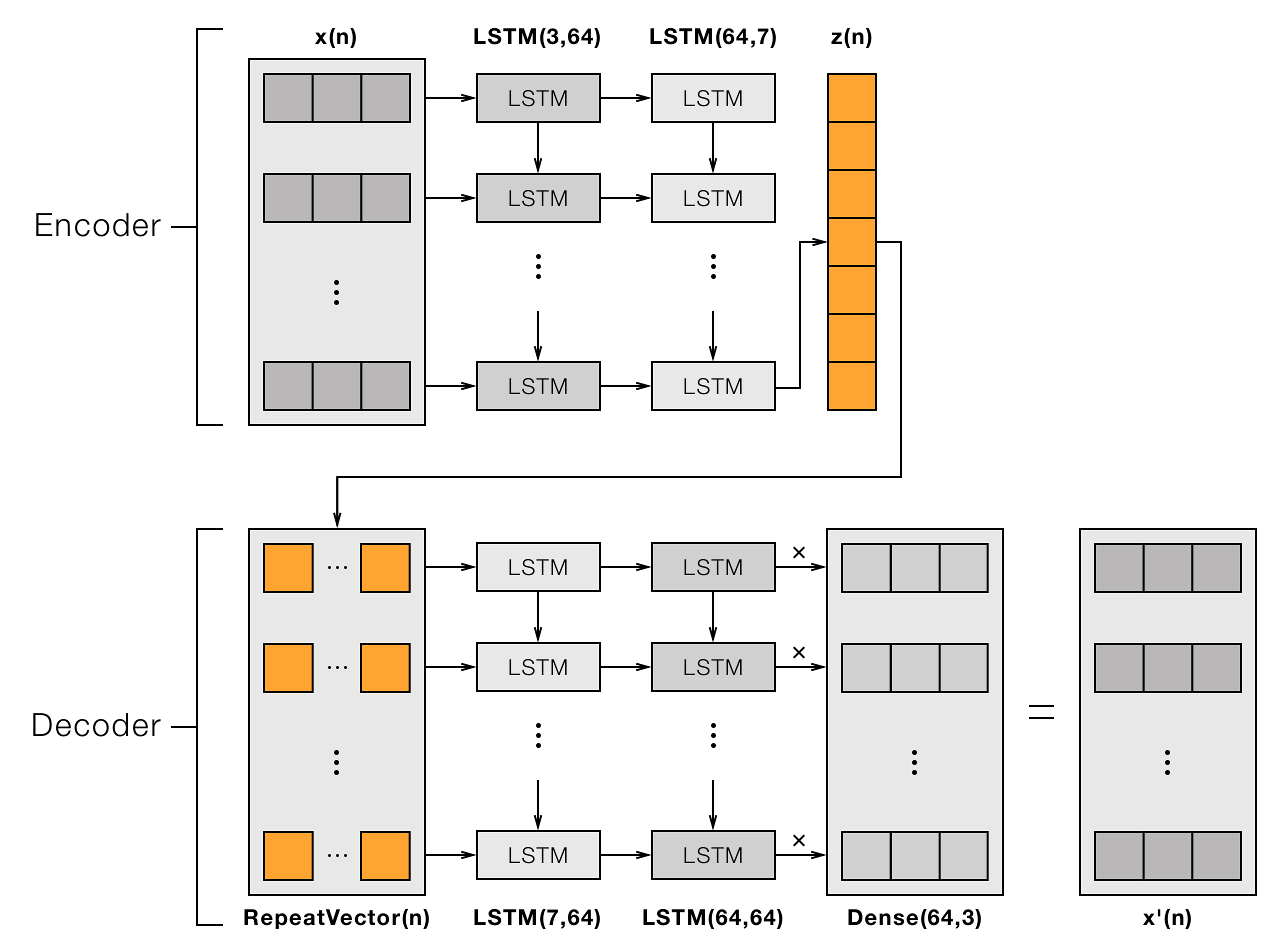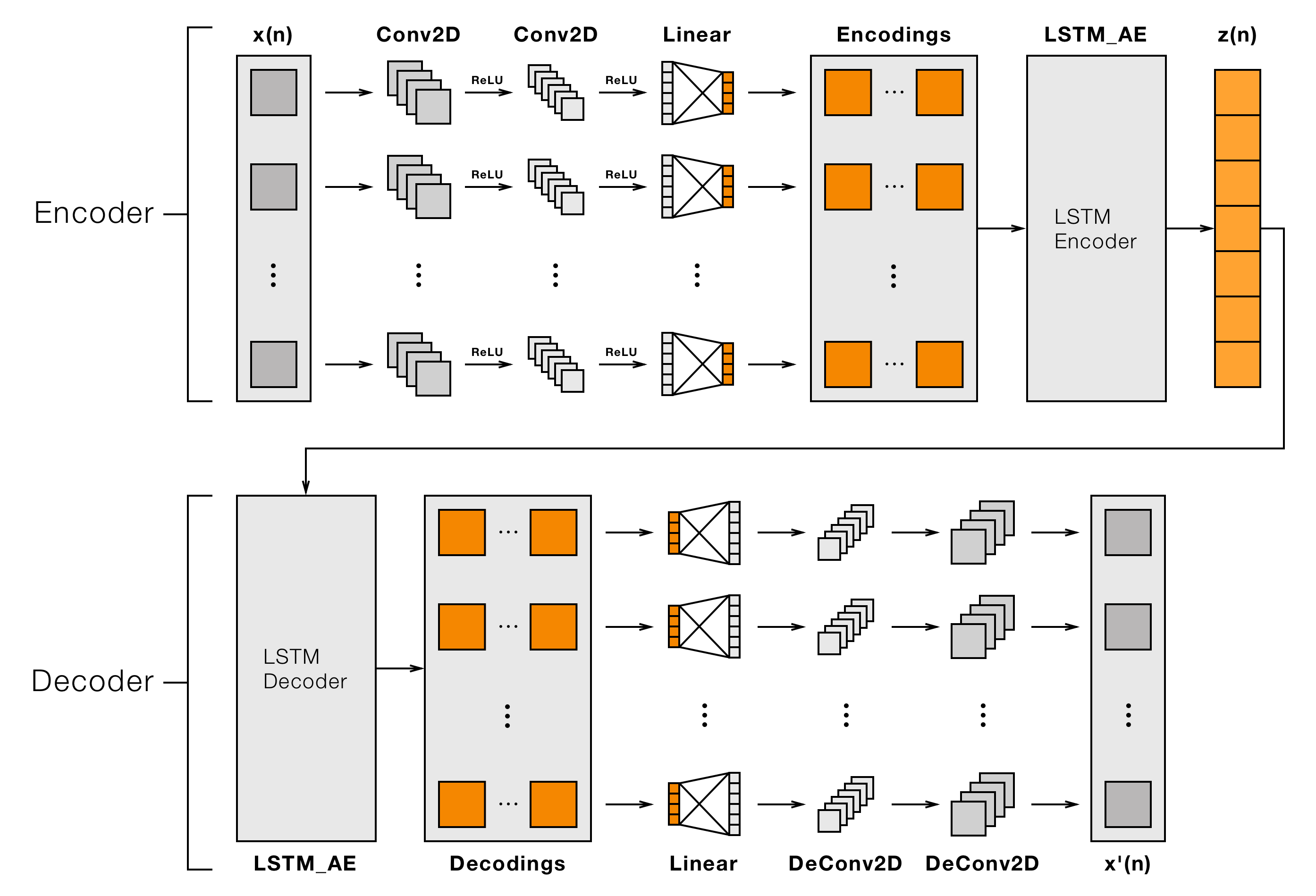shobrook / Sequitur
Programming Languages
Projects that are alternatives of or similar to Sequitur
sequitur
sequitur is a library that lets you create and train an autoencoder for sequential data in just two lines of code. It implements three different autoencoder architectures in PyTorch, and a predefined training loop. sequitur is ideal for working with sequential data ranging from single and multivariate time series to videos, and is geared for those who want to get started quickly with autoencoders.
import torch
from sequitur.models import LINEAR_AE
from sequitur import quick_train
train_seqs = [torch.randn(4) for _ in range(100)] # 100 sequences of length 4
encoder, decoder, _, _ = quick_train(LINEAR_AE, train_seqs, encoding_dim=2, denoise=True)
encoder(torch.randn(4)) # => torch.tensor([0.19, 0.84])
Each autoencoder learns to represent input sequences as lower-dimensional, fixed-size vectors. This can be useful for finding patterns among sequences, clustering sequences, or converting sequences into inputs for other algorithms.

Installation
Requires Python 3.X and PyTorch 1.2.X
You can install sequitur with pip:
$ pip install sequitur
Getting Started
1. Prepare your data
First, you need to prepare a set of example sequences to train an autoencoder on. This training set should be a list of torch.Tensors, where each tensor has shape [num_elements, *num_features]. So, if each example in your training set is a sequence of 10 5x5 matrices, then each example would be a tensor with shape [10, 5, 5].
2. Choose an autoencoder
Next, you need to choose an autoencoder model. If you're working with sequences of numbers (e.g. time series) or 1D vectors (e.g. word vectors), then you should use the LINEAR_AE or LSTM_AE model. For sequences of 2D matrices (e.g. videos) or 3D matrices (e.g. fMRI scans), you'll want to use CONV_LSTM_AE. Each model is a PyTorch module, and can be imported like so:
from sequitur.models import CONV_LSTM_AE
More details about each model are in the "Models" section below.
3. Train the autoencoder
From here, you can either initialize the model yourself and write your own training loop, or import the quick_train function and plug in the model, training set, and desired encoding size, like so:
import torch
from sequitur.models import CONV_LSTM_AE
from sequitur import quick_train
train_set = [torch.randn(10, 5, 5) for _ in range(100)]
encoder, decoder, _, _ = quick_train(CONV_LSTM_AE, train_set, encoding_dim=4)
After training, quick_train returns the encoder and decoder models, which are PyTorch modules that can encode and decode new sequences. These can be used like so:
x = torch.randn(10, 5, 5)
z = encoder(x) # Tensor with shape [4]
x_prime = decoder(z) # Tensor with shape [10, 5, 5]
API
Training your Model
quick_train(model, train_set, encoding_dim, verbose=False, lr=1e-3, epochs=50, denoise=False, **kwargs)
Lets you train an autoencoder with just one line of code. Useful if you don't want to create your own training loop. Training involves learning a vector encoding of each input sequence, reconstructing the original sequence from the encoding, and calculating the loss (mean-squared error) between the reconstructed input and the original input. The autoencoder weights are updated using the Adam optimizer.
Parameters:
-
model(torch.nn.Module): Autoencoder model to train (imported fromsequitur.models) -
train_set(list): List of sequences (each atorch.Tensor) to train the model on; has shape[num_examples, seq_len, *num_features] -
encoding_dim(int): Desired size of the vector encoding -
verbose(bool, optional (default=False)): Whether or not to print the loss at each epoch -
lr(float, optional (default=1e-3)): Learning rate -
epochs(int, optional (default=50)): Number of epochs to train for
-
**kwargs: Parameters to pass intomodelwhen it's instantiated
Returns:
-
encoder(torch.nn.Module): Trained encoder model; takes a sequence (as a tensor) as input and returns an encoding of the sequence as a tensor of shape[encoding_dim] -
decoder(torch.nn.Module): Trained decoder model; takes an encoding (as a tensor) and returns a decoded sequence -
encodings(list): List of tensors corresponding to the final vector encodings of each sequence in the training set -
losses(list): List of average MSE values at each epoch
Models
Every autoencoder inherits from torch.nn.Module and has an encoder attribute and a decoder attribute, both of which also inherit from torch.nn.Module.
Sequences of Numbers
LINEAR_AE(input_dim, encoding_dim, h_dims=[], h_activ=torch.nn.Sigmoid(), out_activ=torch.nn.Tanh())
Consists of fully-connected layers stacked on top of each other. Can only be used if you're dealing with sequences of numbers, not vectors or matrices.

Parameters:
-
input_dim(int): Size of each input sequence -
encoding_dim(int): Size of the vector encoding -
h_dims(list, optional (default=[])): List of hidden layer sizes for the encoder -
h_activ(torch.nn.Module or None, optional (default=torch.nn.Sigmoid())): Activation function to use for hidden layers; ifNone, no activation function is used -
out_activ(torch.nn.Module or None, optional (default=torch.nn.Tanh())): Activation function to use for the output layer in the encoder; ifNone, no activation function is used
Example:
To create the autoencoder shown in the diagram above, use the following arguments:
from sequitur.models import LINEAR_AE
model = LINEAR_AE(
input_dim=10,
encoding_dim=4,
h_dims=[8, 6],
h_activ=None,
out_activ=None
)
x = torch.randn(10) # Sequence of 10 numbers
z = model.encoder(x) # z.shape = [4]
x_prime = model.decoder(z) # x_prime.shape = [10]
Sequences of 1D Vectors
LSTM_AE(input_dim, encoding_dim, h_dims=[], h_activ=torch.nn.Sigmoid(), out_activ=torch.nn.Tanh())
Autoencoder for sequences of vectors which consists of stacked LSTMs. Can be trained on sequences of varying length.

Parameters:
-
input_dim(int): Size of each sequence element (vector) -
encoding_dim(int): Size of the vector encoding -
h_dims(list, optional (default=[])): List of hidden layer sizes for the encoder -
h_activ(torch.nn.Module or None, optional (default=torch.nn.Sigmoid())): Activation function to use for hidden layers; ifNone, no activation function is used -
out_activ(torch.nn.Module or None, optional (default=torch.nn.Tanh())): Activation function to use for the output layer in the encoder; ifNone, no activation function is used
Example:
To create the autoencoder shown in the diagram above, use the following arguments:
from sequitur.models import LSTM_AE
model = LSTM_AE(
input_dim=3,
encoding_dim=7,
h_dims=[64],
h_activ=None,
out_activ=None
)
x = torch.randn(10, 3) # Sequence of 10 3D vectors
z = model.encoder(x) # z.shape = [7]
x_prime = model.decoder(z, seq_len=10) # x_prime.shape = [10, 3]
Sequences of 2D/3D Matrices
CONV_LSTM_AE(input_dims, encoding_dim, kernel, stride=1, h_conv_channels=[1], h_lstm_channels=[])
Autoencoder for sequences of 2D or 3D matrices/images, loosely based on the CNN-LSTM architecture described in Beyond Short Snippets: Deep Networks for Video Classification. Uses a CNN to create vector encodings of each image in an input sequence, and then an LSTM to create encodings of the sequence of vectors.

Parameters:
-
input_dims(tuple): Shape of each 2D or 3D image in the input sequences -
encoding_dim(int): Size of the vector encoding -
kernel(int or tuple): Size of the convolving kernel; use tuple to specify a different size for each dimension -
stride(int or tuple, optional (default=1)): Stride of the convolution; use tuple to specify a different stride for each dimension -
h_conv_channels(list, optional (default=[1])): List of hidden channel sizes for the convolutional layers -
h_lstm_channels(list, optional (default=[])): List of hidden channel sizes for the LSTM layers
Example:
from sequitur.models import CONV_LSTM_AE
model = CONV_LSTM_AE(
input_dims=(50, 100),
encoding_dim=16,
kernel=(5, 8),
stride=(3, 5),
h_conv_channels=[4, 8],
h_lstm_channels=[32, 64]
)
x = torch.randn(22, 50, 100) # Sequence of 22 50x100 images
z = model.encoder(x) # z.shape = [16]
x_prime = model.decoder(z, seq_len=22) # x_prime.shape = [22, 50, 100]
